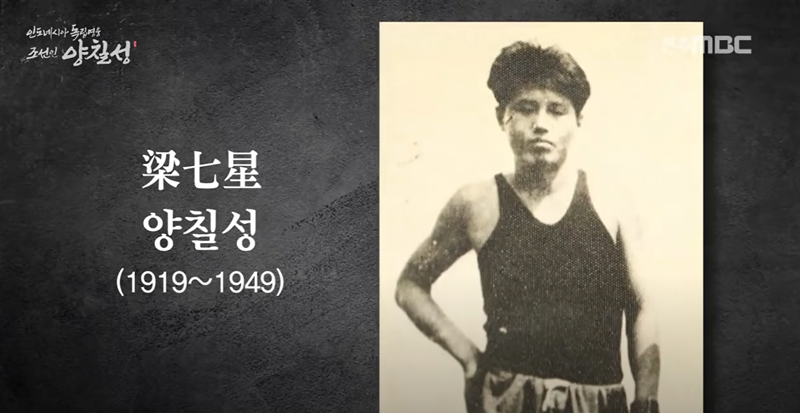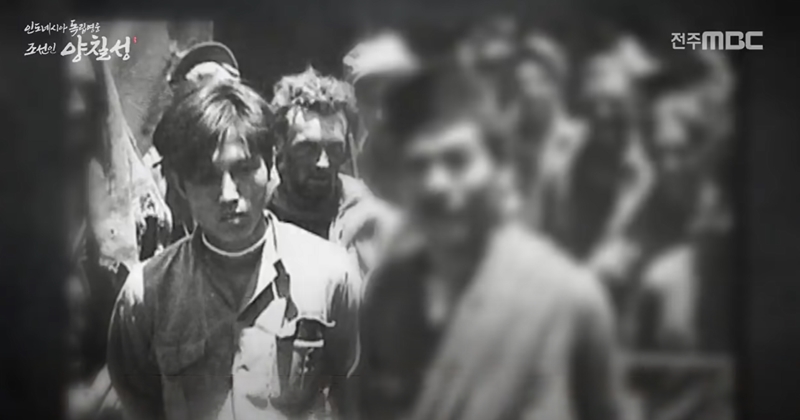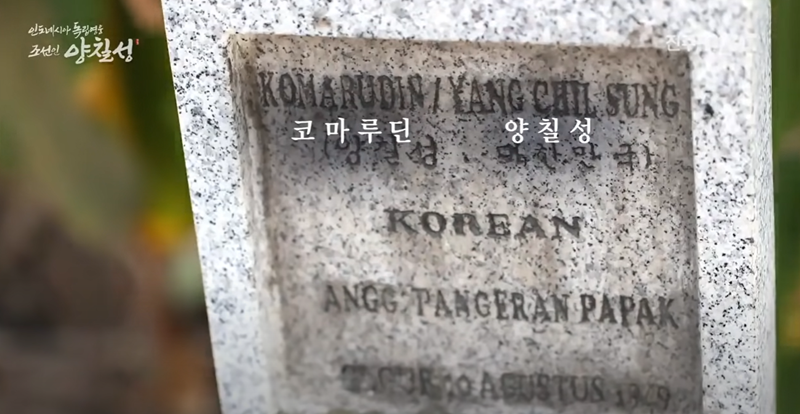View this article in another language
- 한국어
- English
- 日本語
- 中文
- العربية
- Español
- Français
- Deutsch
- Pусский
- Tiếng Việt
- Indonesian
By Honorary Reporter Annisa Mujahidah Robbani from Indonesia
Photos = Jeonju MBC Original's official YouTube channel

The story of Yang Chil-sung aka Komarudin began when Korea was colonized by Japan (1910-45). Many Koreans were forced to work or join the Japanese military as Japan was expanding its territory to Southeast Asia in early 1942. From May 1919, Japan began mobilizing 3,223 auxiliary soldiers to Southeast Asia to guard prisoners of war (POW), and Yang was one of the guards.
Born in Wanju-gun County, Jeollabuk-do Province, Yang on May 29, 1919, arrived on in Java to guard Allied POWs in Bandung. After both Indonesia and Korea gained independence in 1945, however, he decided to remain in Indonesia. Toward the end of World War II, he changed his name to Komarudin and married an Indonesian woman and had a son with her. His daughter-in-law and grandchildren still live in Indonesia.
In March 1946, Bandung was hit by war. Hundreds of Indonesian youth groups from all over the city of Pasundan gathered in Bandung to fight Allied troops and remaining Japanese soldiers. One of them was Pasukan Pengeran Papak (PPP) from Garut, a town in West Java. Komarudin and eight fellow soldiers joined PPP to fight for Indonesia's independence from Dutch colonial rule.
Komarudin's membership in PPP soon gave headaches to the Dutch military. His most impressive action was the destruction of the Cimanuk Bridge to thwart a Dutch plan to control the city of Wanaraja. But after Dutch forces attacked Garut, PPP was tasked with securing the area. Because the Dutch military was too strong, Indonesian troops had to retreat. Finally, Komarudin and three fellow soldiers were caught on Mount Dora by a Dutch ambush in November 1948. On Aug. 10, 1949, Yang was executed in Garut along with two Japanese soldiers. Just before he died, he shouted "Merdeka!" the Indonesian word for "freedom."

Komarudin was buried in a cemetery in Bogur, but in 1975, his remains were moved to another cemetery in Garut. In August 1995, the Indonesian government and representatives from Korea held a ceremony to have his tombstone say he was Korean. Komarudin is remembered in Indonesia as a hero in the fight for the country's independence.

*Unauthorized reproduction and redistribution of the above photo is strictly prohibited under copyright laws and regulations.
kalhong617@korea.kr
*This article is written by a Korea.net Honorary Reporter. Our group of Honorary Reporters are from all around the world, and they share with Korea.net their love and passion for all things Korean.
Photos = Jeonju MBC Original's official YouTube channel

The story of Yang Chil-sung aka Komarudin began when Korea was colonized by Japan (1910-45). Many Koreans were forced to work or join the Japanese military as Japan was expanding its territory to Southeast Asia in early 1942. From May 1919, Japan began mobilizing 3,223 auxiliary soldiers to Southeast Asia to guard prisoners of war (POW), and Yang was one of the guards.
Born in Wanju-gun County, Jeollabuk-do Province, Yang on May 29, 1919, arrived on in Java to guard Allied POWs in Bandung. After both Indonesia and Korea gained independence in 1945, however, he decided to remain in Indonesia. Toward the end of World War II, he changed his name to Komarudin and married an Indonesian woman and had a son with her. His daughter-in-law and grandchildren still live in Indonesia.
In March 1946, Bandung was hit by war. Hundreds of Indonesian youth groups from all over the city of Pasundan gathered in Bandung to fight Allied troops and remaining Japanese soldiers. One of them was Pasukan Pengeran Papak (PPP) from Garut, a town in West Java. Komarudin and eight fellow soldiers joined PPP to fight for Indonesia's independence from Dutch colonial rule.
Komarudin's membership in PPP soon gave headaches to the Dutch military. His most impressive action was the destruction of the Cimanuk Bridge to thwart a Dutch plan to control the city of Wanaraja. But after Dutch forces attacked Garut, PPP was tasked with securing the area. Because the Dutch military was too strong, Indonesian troops had to retreat. Finally, Komarudin and three fellow soldiers were caught on Mount Dora by a Dutch ambush in November 1948. On Aug. 10, 1949, Yang was executed in Garut along with two Japanese soldiers. Just before he died, he shouted "Merdeka!" the Indonesian word for "freedom."

Komarudin is shown here being dragged to prison with a noose around his neck.
Komarudin was buried in a cemetery in Bogur, but in 1975, his remains were moved to another cemetery in Garut. In August 1995, the Indonesian government and representatives from Korea held a ceremony to have his tombstone say he was Korean. Komarudin is remembered in Indonesia as a hero in the fight for the country's independence.

Komarudin's tombstone was revised to indicate his Korean ethnicity.
*Unauthorized reproduction and redistribution of the above photo is strictly prohibited under copyright laws and regulations.
kalhong617@korea.kr
*This article is written by a Korea.net Honorary Reporter. Our group of Honorary Reporters are from all around the world, and they share with Korea.net their love and passion for all things Korean.